Two out of Three Logic with Boolean Algebra Analysis :
In designing digital circuits, the designer often begins with a truth table describing what the circuit should do. The design task is largely to determine what type of circuit will perform the function described in the truth table. While some people seem to have a natural ability to look at a truth table and immediately envision the necessary logic gate or relay logic circuitry for the task, there are procedural techniques available for the rest of us. Here, Boolean algebra proves its utility in a most dramatic way.
To illustrate this procedural method, we should begin with a realistic design problem. Suppose we were given the task of designing a flame detection circuit for a toxic waste incinerator. The intense heat of the fire is intended to neutralize the toxicity of the waste introduced into the incinerator. Such combustion-based techniques are commonly used to neutralize medical waste, which may be infected with deadly viruses or bacteria:
So long as a flame is maintained in the incinerator, it is safe to inject waste into it to be neutralized. If the flame were to be extinguished, however, it would be unsafe to continue to inject waste into the combustion chamber, as it would exit the exhaust un-neutralized, and pose a health threat to anyone in close proximity to the exhaust. What we need in this system is a sure way of detecting the presence of a flame, and permitting waste to be injected only if a flame is “proven” by the flame detection system.
Several different flame-detection technologies exist: optical (detection of light), thermal (detection of high temperature), and electrical conduction (detection of ionized particles in the flame path), each one with its unique advantages and disadvantages.
Suppose that due to the high degree of hazard involved with potentially passing un-neutralized waste out the exhaust of this incinerator, it is decided that the flame detection system be made redundant (multiple sensors), so that failure of a single sensor does not lead to an emission of toxins out the exhaust. Each sensor comes equipped with a normally-open contact (open if no flame, closed if flame detected) which we will use to activate the inputs of a logic system:
Our task, now, is to design the circuitry of the logic system to open the waste valve if and only if there is good flame proven by the sensors. First, though, we must decide what the logical behavior of this control system should be. Do we want the valve to be opened if only one out of the three sensors detects flame? Probably not, because this would defeat the purpose of having multiple sensors.
If any one of the sensors were to fail in such a way as to falsely indicate the presence of flame when there was none, a logic system based on the principle of “any one out of three sensors showing flame” would give the same output that a single-sensor system would with the same failure.
A far better solution would be to design the system so that the valve is commanded to open if and only if all three sensors detect a good flame. This way, any single, failed sensor falsely showing flame could not keep the valve in the open position; rather, it would require all three sensors to be failed in the same manner—a highly improbable scenario—for this dangerous condition to occur.
Thus, our truth table would look like this:
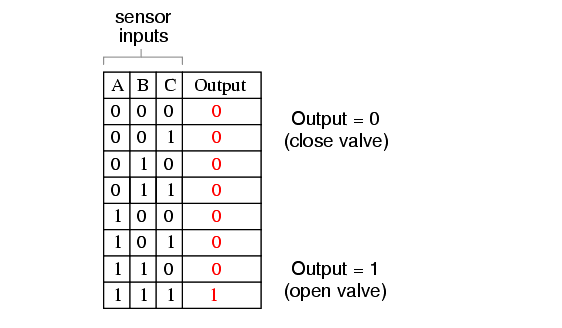
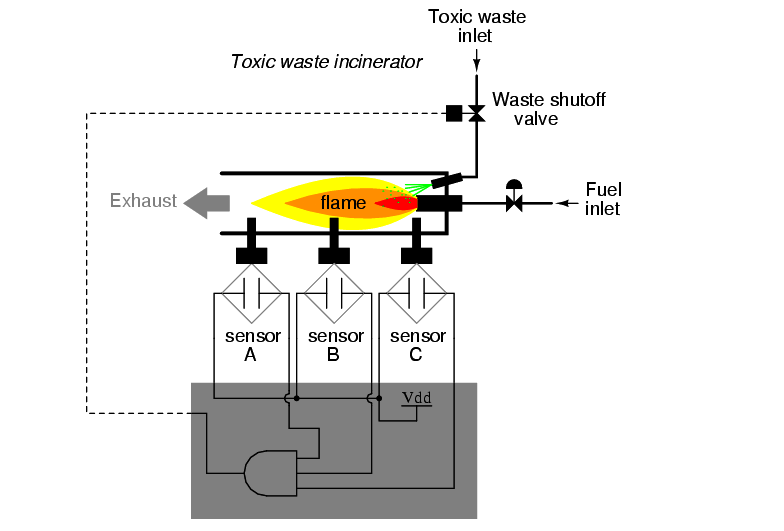
While this design strategy maximizes safety, it makes the system very susceptible to sensor failures of the opposite kind. Suppose that one of the three sensors were to fail in such a way that it indicated no flame when there really was a good flame in the incinerator’s combustion chamber. That single failure would shut off the waste valve unnecessarily, resulting in lost production time and wasted fuel (feeding a fire that wasn’t being used to incinerate waste).
It would be nice to have a logic system that allowed for this kind of failure without shutting the system down unnecessarily, yet still provide sensor redundancy so as to maintain safety in the event that any single sensor failed “high” (showing flame at all times, whether or not there was one to detect). A strategy that would meet both needs would be a “two out of three” sensor logic, whereby the waste valve is opened if at least two out of the three sensors show good flame. The truth table for such a system would look like this:
Here, it is not necessarily obvious what kind of logic circuit would satisfy the truth table. However, a simple method for designing such a circuit is found in a standard form of Boolean expression called the Sum-Of-Products, or SOP, form. As you might suspect, a Sum-Of-Products Boolean expression is literally a set of Boolean terms added (summed) together, each term being a multiplicative (product) combination of Boolean variables. An example of an SOP expression would be something like this: ABC + BC + DF, the sum of products “ABC,” “BC,” and “DF.”
Sum-Of-Products expressions are easy to generate from truth tables. All we have to do is examine the truth table for any rows where the output is “high” (1), and write a Boolean product term that would equal a value of 1 given those input conditions. For instance, in the fourth row down in the truth table for our two-out-of-three logic system, where A=0, B=1, and C=1, the product term would be A’BC, since that term would have a value of 1 if and only if A=0, B=1, and C=1:
Three other rows of the truth table have an output value of 1, so those rows also need Boolean product expressions to represent them:
Finally, we join these four Boolean product expressions together by addition, to create a single Boolean expression describing the truth table as a whole:
Now that we have a Boolean Sum-Of-Products expression for the truth table’s function, we can easily design a logic gate or relay logic circuit based on that expression:
Unfortunately, both of these circuits are quite complex, and could benefit from simplification. Using Boolean algebra techniques, the expression may be significantly simplified:
As a result of the simplification, we can now build much simpler logic circuits performing the same function, in either gate or relay form:
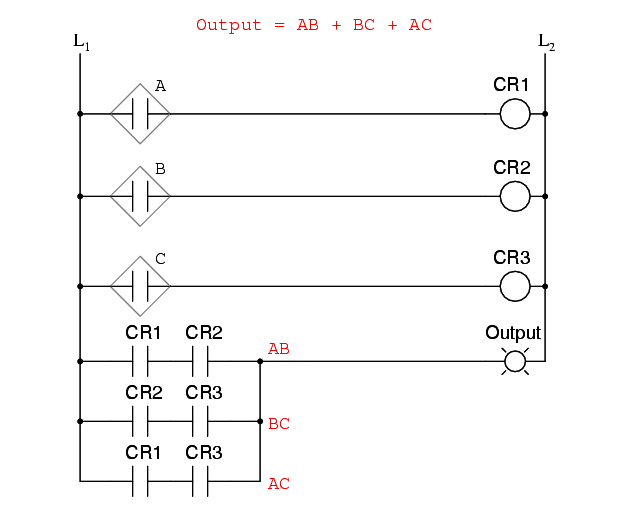
If all three sensors are operating properly, they should detect flame with equal accuracy. Thus, they should either all register “low” (000: no flame) or all register “high” (111: good flame). Any other output combination (001, 010, 011, 100, 101, or 110) constitutes a disagreement between sensors, and may therefore serve as an indicator of a potential sensor failure. If we added circuitry to detect any one of the six “sensor disagreement” conditions, we could use the output of that circuitry to activate an alarm.
Whoever is monitoring the incinerator would then exercise judgment in either continuing to operate with a possible failed sensor (inputs: 011, 101, or 110), or shut the incinerator down to be absolutely safe. Also, if the incinerator is shut down (no flame), and one or more of the sensors still indicates flame (001, 010, 011, 100, 101, or 110) while the other(s) indicate(s) no flame, it will be known that a definite sensor problem exists.
The first step in designing this “sensor disagreement” detection circuit is to write a truth table describing its behavior. Since we already have a truth table describing the output of the “good flame” logic circuit, we can simply add another output column to the table to represent the second circuit, and make a table representing the entire logic system:
While it is possible to generate a Sum-Of-Products expression for this new truth table column, it would require six terms, of three variables each! Such a Boolean expression would require many steps to simplify, with a large potential for making algebraic errors:
An alternative to generating a Sum-Of-Products expression to account for all the “high” (1) output conditions in the truth table is to generate a Product-Of-Sums, or POS, expression, to account for all the “low” (0) output conditions instead. Being that there are much fewer instances of a “low” output in the last truth table column, the resulting Product-Of-Sums expression should contain fewer terms. As its name suggests, a Product-Of-Sums expression is a set of added terms (sums), which are multiplied (product) together. An example of a POS expression would be (A + B)(C + D), the product of the sums “A + B” and “C + D”.
To begin, we identify which rows in the last truth table column have “low” (0) outputs, and write a Boolean sum term that would equal 0 for that row’s input conditions. For instance, in the first row of the truth table, where A=0, B=0, and C=0, the sum term would be (A + B + C), since that term would have a value of 0 if and only if A=0, B=0, and C=0:
Only one other row in the last truth table column has a “low” (0) output, so all we need is one more sum term to complete our Product-Of-Sums expression. This last sum term represents a 0 output for an input condition of A=1, B=1 and C=1. Therefore, the term must be written as (A’ + B’+ C’), because only the sum of the complemented input variables would equal 0 for that condition only:
The completed Product-Of-Sums expression, of course, is the multiplicative combination of these two sum terms:
Whereas a Sum-Of-Products expression could be implemented in the form of a set of AND gates with their outputs connecting to a single OR gate, a Product-Of-Sums expression can be implemented as a set of OR gates feeding into a single AND gate:
Correspondingly, whereas a Sum-Of-Products expression could be implemented as a parallel collection of series-connected relay contacts, a Product-Of-Sums expression can be implemented as a series collection of parallel-connected relay contacts:
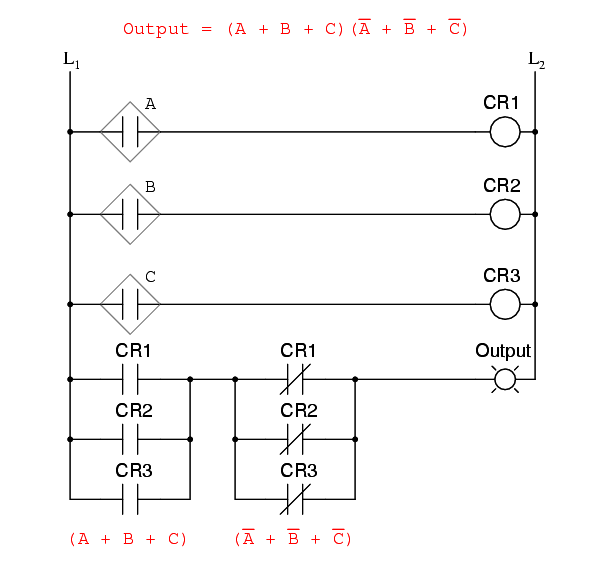
Implemented in a Programmable Logic Controller (PLC), the entire logic system might resemble something like this:

To be able to go from a written specification to an actual circuit using simple, deterministic procedures means that it is possible to automate the design process for a digital circuit. In other words, a computer could be programmed to design a custom logic circuit from a truth table specification! The steps to take from a truth table to the final circuit are so unambiguous and direct that it requires little, if any, creativity or other original thought to execute them.
SUMMARY :
- Sum-Of-Products, or SOP, Boolean expressions may be generated from truth tables quite easily, by determining which rows of the table have an output of 1, writing one product term for each row, and finally summing all the product terms. This creates a Boolean expression representing the truth table as a whole.
- Sum-Of-Products expressions lend themselves well to implementation as a set of AND gates (products) feeding into a single OR gate (sum).
- Product-Of-Sums, or POS, Boolean expressions may also be generated from truth tables quite easily, by determining which rows of the table have an output of 0, writing one sum term for each row, and finally multiplying all the sum terms. This creates a Boolean expression representing the truth table as a whole.
- Product-Of-Sums expressions lend themselves well to implementation as a set of OR gates (sums) feeding into a single AND gate (product).
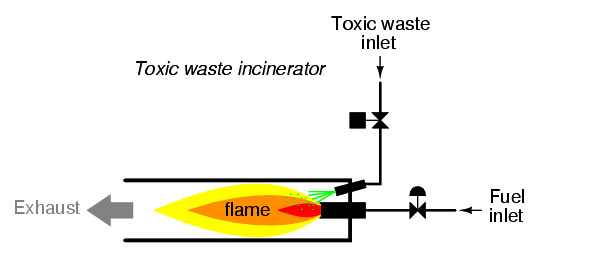
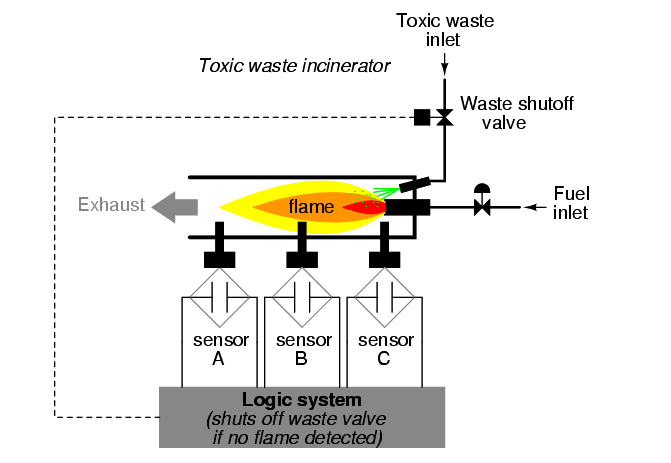
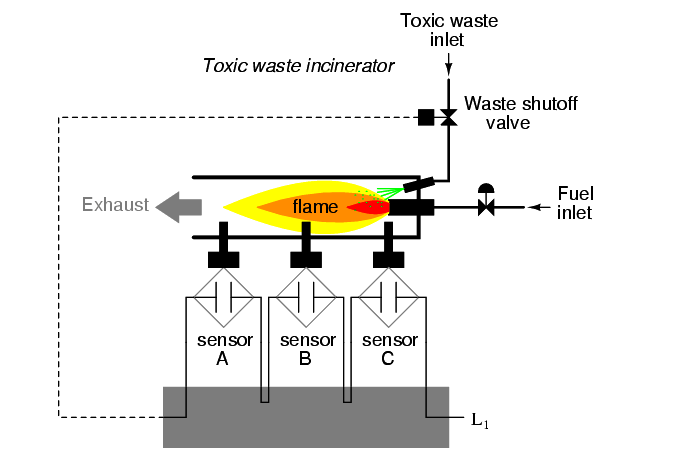
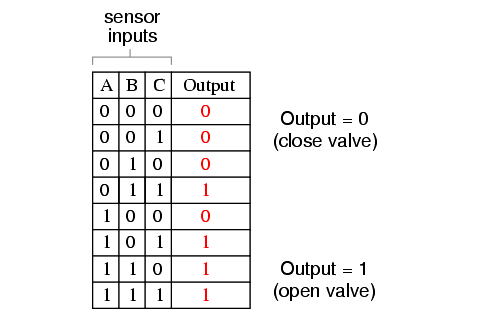
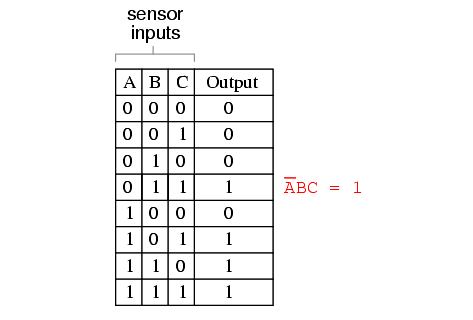
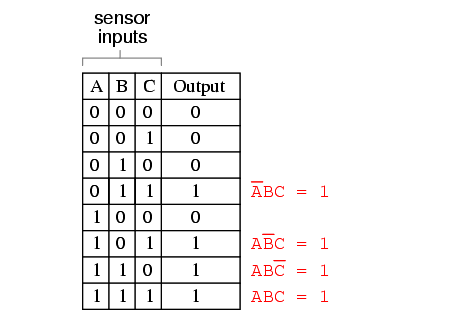

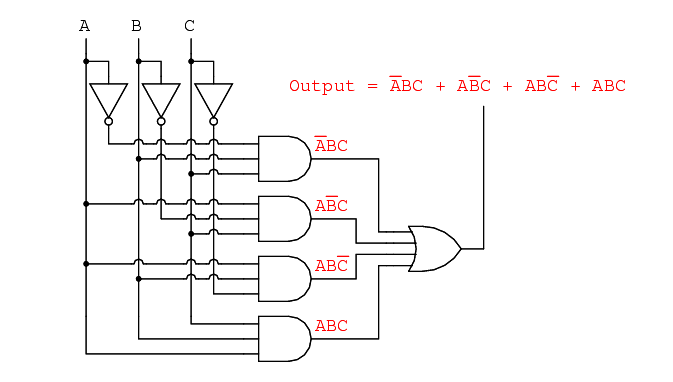
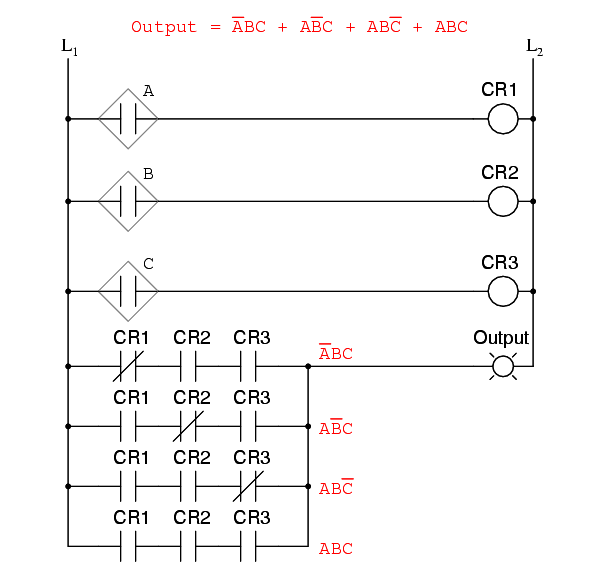
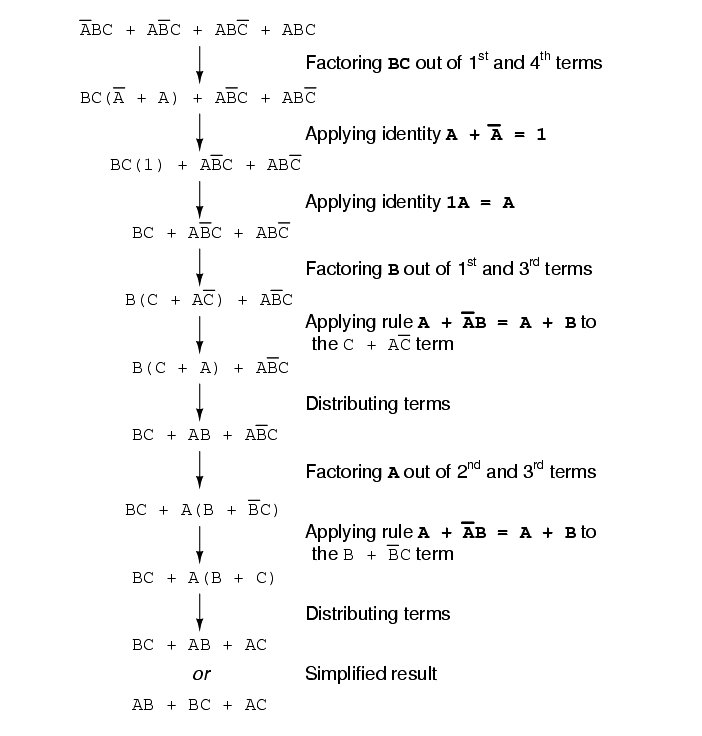
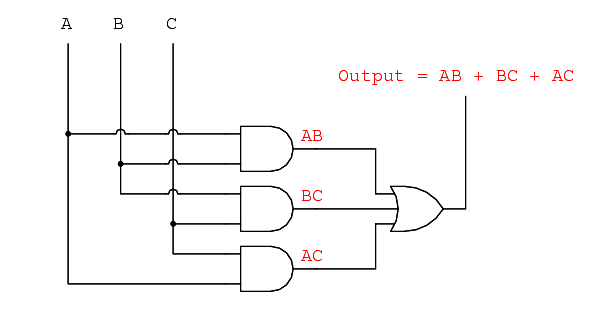
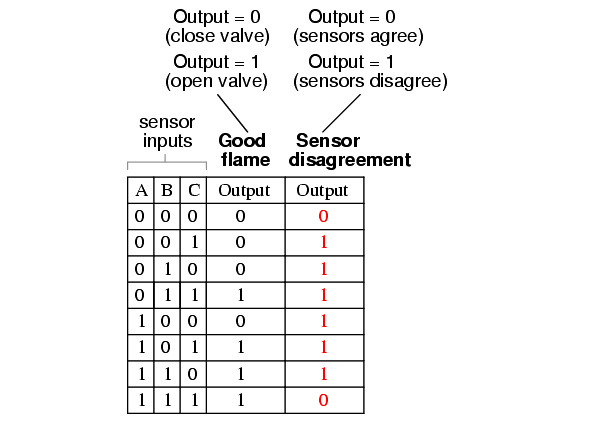
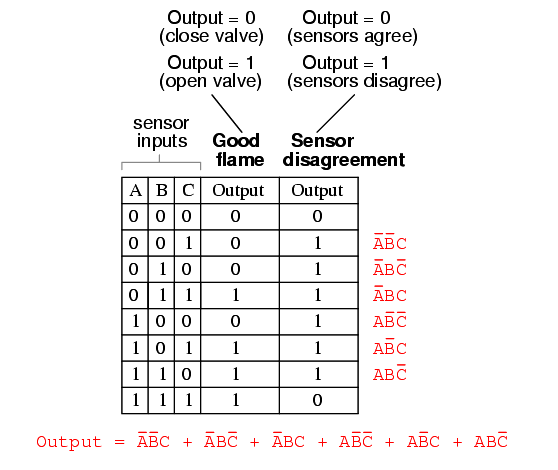
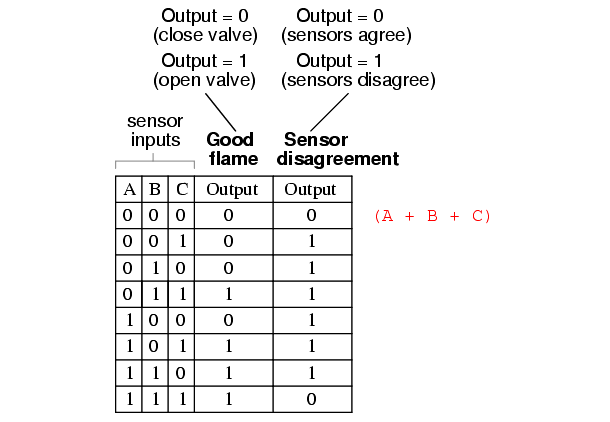

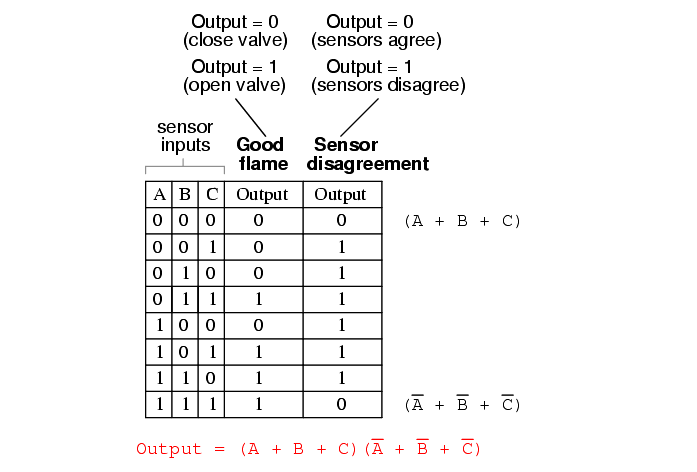
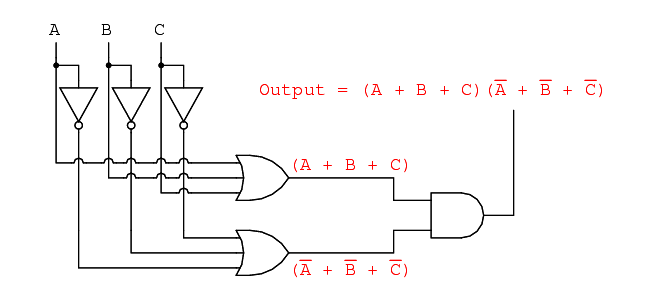
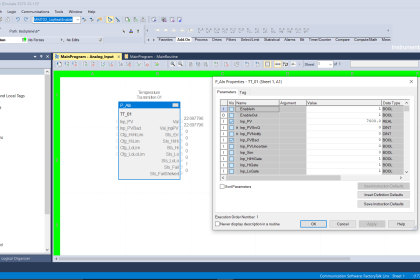
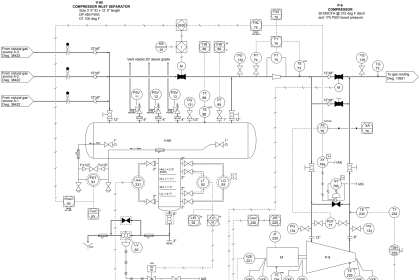
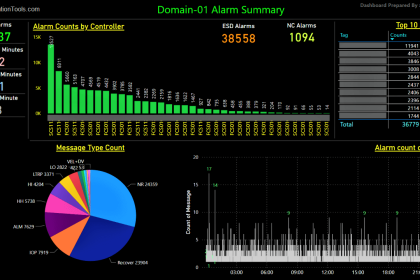
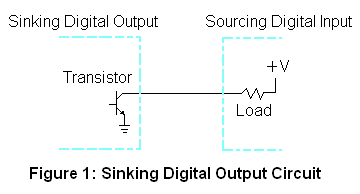


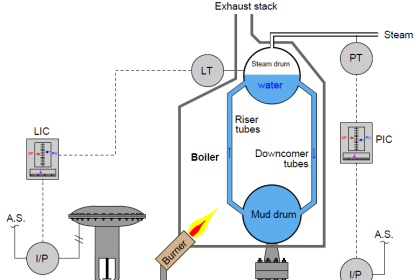

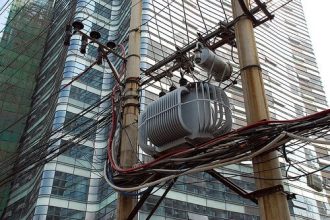
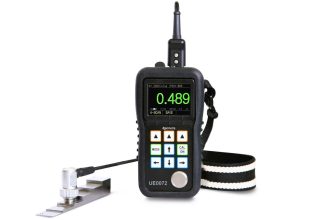

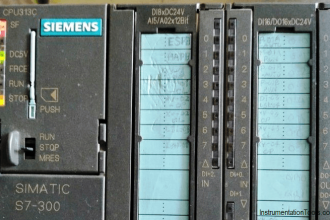

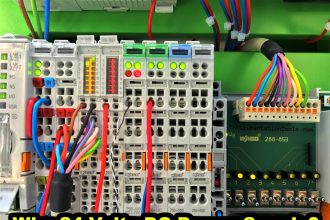
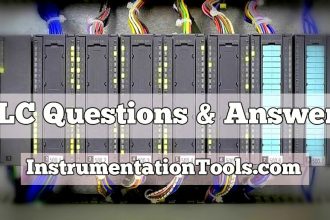
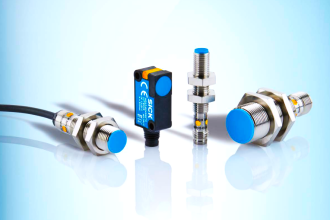

A two out of three (2 oo 3) voting system can be used in any instrumentated system and it achieves 2 things.
1) If there is a problem, it increases you chances of detecting it and taking remedial action
2) It reduces your chances of taking action (shutting down a fired heater for example) when there isn’t really a problem.
In terms of unwanted shutdowns, each instrument has a given probability of failure (once every 5 years is a pretty good number as a rule of thumb). If only one has to fail to produce the unwanted shutdown you will have a spurious shutdown every five years or so. If 2 have to fail for a spurious shutdown, this is reduced to once every 25 years.
Failure to detect a dangerous situation is more difficult to represent, but is also significantly reduced. It has to be said that most of the applications I personally know are for increasing plant reliability rather than increasing intrinsic safety. There are other considerations for safety (which include 2 oo 3) available under the SIL / SIS codes.
Typical measurements in combustion might be fuel pressure (high and low trips), pilot gas pressure (low trip) O2 in flue gas (low trip), air flow rate (low trip) or firebox or convection section temperatures (high trip)
Its not perfect, and how well it works depends on how its defined and how its configured and how well it is maintained.
The best system is with three instruments that are continuously measuring the variable, are checked regularly in the field and are set up with deviation alarms.
The second best system is with switches which give digital output at a certain value but nothing if that value is not detected (no continuous measurement, so the deviation alarm is lost) and with routine calibration and maintenance.
A 2 oo 3 system which is not maintained or tested swiftly loses its advantages.
The signals feed into a PLC which as a result of the input takes action by sending a digital signal (to close a valve for example). The PLC which provokes instrumented emergency action has to be an FSC, a fail safe controller. that means that if its not sure what the situation is, it will shut the system down.
Your insight on circuits are really informative and are going to help a lot people trying to improve their engineering skills. Having a background in tech and engineering will go a long way in semiconductor companies. I really appreciate the Sum-of-Products and Product-of-Sums explanation.
Thank you so much
Very good explanation. I’m really appreciate that it’s very helpful for me
Thank you so much
In my system three temperature sensor are in series. I have 4-20 output for heater .how could I control pid output using 2/3 logic.
What should I do?
Use 3 pid control loop and avg their count ?
@vivek:
You can take 1. Average of 3 values, 2. Middle of the 3 values, 3. Highest of the 3 values, or 4. Lowest of the 3 values and use it as PV of a single temperature controller.
“congratulations it is very well explained with examples”